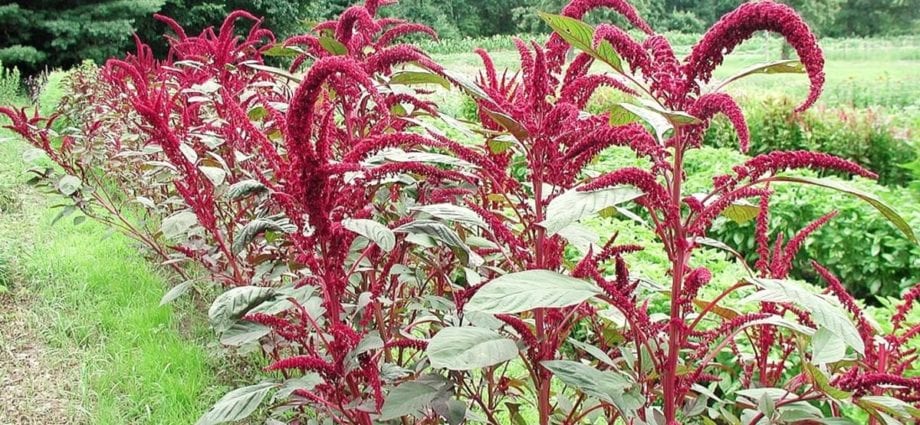Amaranth is a “versatile” plant. It is used both as a vegetable crop (the leaves are dried, fried or steamed and added, for example, to salads, or served as a side dish), and as a fodder crop, and as an ornamental plant. Oil is made from amaranth. I am especially interested in amaranth as a cereal crop. Amaranth grains (and, by the way, they can be sprouted or made into flour) do not contain gluten, intolerance to which many people suffer, but they contain a unique set of amino acids, and in terms of the amount of vitamins and macronutrients they surpass many other cereals.
Here are some reasons to include amaranth in your diet:
1.For a vegetable source of protein, amaranth has an ideal set of amino acids in terms of quality, quantity and digestibility: the plant contains 8 essential amino acids and is especially rich in lysine, which is very scarce in other cereals. 190 grams of amaranth contains 26 grams of protein. For comparison, the amount of protein in the same serving of white rice is 13 grams.
2. Calcium in amaranth is much higher than in other cereals. For example, a serving of white rice contains 52 milligrams of calcium, and a serving of amaranth has 298 milligrams.
3. Amaranth is rich in magnesium: 519 milligrams per serving, while buckwheat has 393 milligrams, and white rice has only 46 milligrams.
4.In terms of iron content (15 milligrams per serving), amaranth also leaves behind other grains. For example, white rice contains only 1,5 milligrams of iron.
5.Rich in amaranth and fiber – 18 grams per serving. A portion of buckwheat contains 17 grams of fiber, and a portion of white rice contains 2,4 grams.
6. Like most whole grains, amaranth is a good source of polyunsaturated fatty acids, and is comparable to olive oil in terms of vitamin E.
So far I have managed to cook only one amaranth dish, the recipe for which I offer you. I must note that boiled amaranth looks peculiar, but I really liked it.
Amaranth with vegetables
Ingredients:
Half a glass of amaranth, 1,5 glasses of water, 2 tablespoons of olive oil, bell peppers, 3 baby zucchinis, a third of a broccoli head, a small onion, a small carrot and any other vegetables of your choice, salt and pepper.
Preparation:
Add amaranth to boiling water, bring to a boil and reduce heat, cover and simmer for 15–20 minutes, stirring occasionally. While the amaranth is cooking, chop all the vegetables, pour the oil into the pan, heat and fry the vegetables, starting with the onions. Stir the vegetables constantly so that they do not burn. When the amaranth is cooked (it absorbs all the water), transfer it to a skillet and stir with vegetables. The dish is ready! You can sprinkle it with fresh herbs before serving.
You can buy amaranth here.
Sources:
USDA, Nutritional Database, Standard Ref. 20, version 20088
Pseuodcereals and Less Common Cereals, Grain Properties and Utilization Potential, Peter S. Belton and John R.N. Taylor, Springer, Berlin, 2002, pp. 219-252










